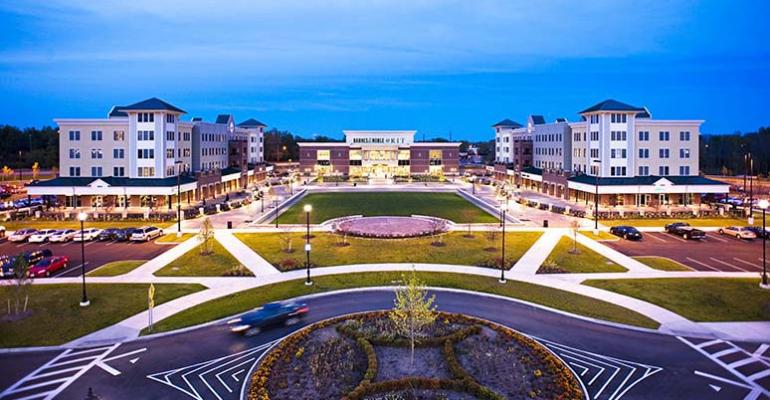After years of solid performance, the student housing sector is on track for another good year.
“New supply of purpose-built student housing remains at moderate levels for the fourth consecutive year, and performance is on pace with last fall,” says Taylor Gunn, student housing analytics lead for RealPage Data Analytics.
That’s good news. Last year, student housing operators saw solid occupancies at the start of the school year. Rents continue to grow. Developers continue to open new properties at many schools, at a fairly consistent rate compared to prior years. The only clouds in the forecast hang over student housing properties in the areas around the few universities that have received too much attention from developers.
Pre-leasing proceeding well
With roughly half a year to go before the start of the school year, 37.2 percent of student housing beds had been leased as of January 2017, according to RealPage. That’s only 28 basis points lower than the occupancy rate at the same time last year.
The student housing sector is now roughly on track to match last year’s performance. The percentage of student housing beds occupied as of September 2017 averaged 94.8 percent. That’s close to fully-occupied, even though it’s down 125 basis points from September 2016 and 173 basis points from September 2015.
Annual effective rent growth for off-campus beds moderated to 1.8 percent, the student housing surveys found, but remained in line with historical averages. “Operators are trying to find a balance between filling beds and raising rents,” says Gunn. At properties where the percentage of student housing beds that are occupied has fallen, operators are often less aggressive in raising rents than they have been in prior years.
‘Developers are on track to deliver a total of 46,000 new off campus student housing beds for the fall 2018 semester. That’s roughly the same amount of new student housing that was delivered every year since 2015, though certain universities have seen fluctuations and even elevated levels of new supply.
Student housing REITs also reported strong results. American Campus Communities (ACC) reported an average same-property occupancy rate of 97.6 percent, with rents that grew 2.6 percent compared to the year before. Same-property rental revenue, rental rates and net operating income have grown every year for ACC since its initial public offering in 2004.
The percentage of student housing beds occupied at communities owned by the student housing REIT Education Realty Trust (EdR) fell by 1.2 percent in 2017 compared to the year before. However, rents still grew by 3.0 percent—slightly below the 3.4 percent posted the year before, but still strong.
Overbuilding threatens student housing at a few schools
Developers have arguably been too busy building new student housing around a few specific universities. There are 15 schools where developers are scheduled to deliver more than 1,000 new beds of for the fall semester.
Experts will be paying close attention to schools like Florida State University, which has not seen this level of supply delivered since 2014, during the peak development years. New supply at the University of Mississippi is tracking above last year’s levels and has led to slowed leasing velocity (down 7.5 percent) and a rent decline of 2.6 percent.
Lots of room to grow
Nevertheless, the student housing sector still has a lot of room to grow. Only 11 percent of the students enrolled in the 68 universities served by ACC live in modern, purpose-built student housing located within walking distance of campus. Another 22 percent live in on-campus dormitories, which are mostly more than 50 years old.
The rest—67 percent—live in other forms of rental housing, often rental properties too far from campus to walk to class. These students represent a large pool of potential residents.
“This fundamental lack of appropriate supply… has driven the consistency of cash flows we’ve achieved,” says Ryan Dennision, senior vice president of capital markets and investor relations for ACC.

